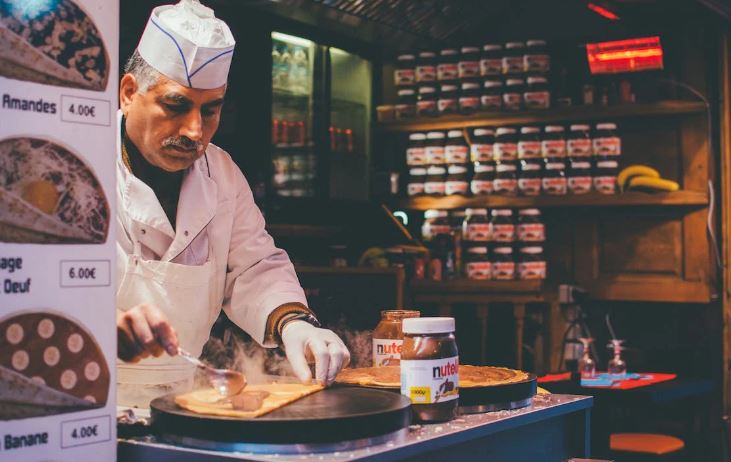Are you looking for creative and safe ways to store food? The traditional refrigerator in your kitchen is undoubtedly an excellent tool for keeping foods fresh, but it only accounts for some food and storage needs. In this article, we will explore different storage methods that go beyond the fridge to ensure all your foods are kept fresh while accommodating space constraints.
Whether you’re working with a small pantry or an overcrowded kitchen, plenty of options are available so you can make the most out of what’s available. Read on to learn how using airtight containers, unexpected locations, and some old-fashioned tricks can help increase food storage efficiency.
Invest in Energy-Efficient, Space-Saving Refrigerators, and Freezers
Regarding home appliances, refrigerators and freezers are some of the biggest energy consumers. That’s why investing in energy-efficient models can significantly impact your wallet and the environment. Not only do they use less electricity, but space-saving models can also help you save money on groceries by helping you avoid over-buying or wasting food that gets pushed to the back and forgotten.
With so many options available, it’s worth researching and crunching the numbers to find the best fit for your household’s needs. Switching to an energy-efficient refrigerator or freezer is a step towards a more sustainable and responsible lifestyle.
Utilize Your Pantry for Storing Long-Term Foods
Your pantry is the perfect place to store food that will last a long time, like canned items and cereals. It’s best practice to keep it organized as much as possible so you can easily spot what needs to be used up first. Large clear glass jars or wholesale plastic cups with lids are great for storing small items like nuts, dried fruit, and grains. As a bonus, these containers help make your pantry look neat.
If space allows, consider adding a few shelves between existing cabinets to keep commonly used items within easy reach. It saves time hunting through cluttered drawers and makes your kitchen look much more presentable if unexpected guests drop by.
Use Mason Jars to Keep Staples Fresh and Accessible
Mason jars are an affordable and versatile storage solution for various food items, from dried herbs and spices to nuts and flour. Because they come in various sizes, you can easily adjust the quantity depending on what needs storing. Plus, their airtight lids help prevent moisture and pests from getting into your food.
If you’re short on counter space but love having all your ingredients within reach while cooking, Mason jars can be stored vertically along a wall or even hung up with hooks to maximize available space. Not only is this great for keeping things organized and easy to access, but it looks tidy too.
Harness the Power of Vacuum Packaging for Non-Refrigerated Items
Vacuum-sealing bags and rolls are great for keeping non-refrigerated items fresh for longer. They’re beneficial for nuts, grains, and seeds since they contain moisture and pests that may otherwise spoil your supplies. Not to mention it’s a great way of making the most of limited storage space – the airtight seal allows you to stack multiple packages in one area without worrying about them taking up too much room.
If you need help figuring out where to start, plenty of vacuum sealing systems come with easy-to-use instructions so you can get set up quickly. Plus, using vacuum packaging is a step towards becoming more eco-friendly by reducing food waste and decreasing reliance on single-use plastic bags.
Choose the Right Containers for Specific Items
When selecting containers for food storage, opting for glass or stainless steel is a great choice. These are non-toxic and safe for food use, but they don’t leach any chemicals into your meals. Plus, because they’re reusable and have long lifespans, you can help reduce your plastic waste by avoiding disposable options.
It’s also essential to choose the right size of container for what you’re storing – an oversized one will likely require more energy when cooling or heating food, while a too-small one increases the risk of overstocking shelves and wasting space.
Consider Different Types of Food Storage Racks
If you have a larger kitchen with enough space, food storage racks are an ideal way to keep your supplies neat and organized. Options such as bakers’ racks or wall-mounted wire shelves provide ample room for containers and bags, plus they’re usually adjustable so that you can customize the layout depending on your needs.
Not only do these help maximize available space, but they look great too! A few strategically placed shelves can transform a cluttered pantry into an impressive, stylish, and functional display. With this in mind, it’s well worth investing in quality racks that will last many years.
Utilize Your Freezer for Long-Term Storage
The freezer is often overlooked in kitchen storage, but it can be a great way of keeping certain items for extended periods. From frozen vegetables and fruits to nuts and grains, plenty of food items benefit from being stored in the freezer due to their reduced risk of spoiling or going off.
If you’re limited on space, invest in stackable containers to make the most of your freezer’s capacity – this also makes it easier to take out what you need without disturbing the other items. Lastly, remember to label each container with its contents and expiration date so you’re always aware of what needs to be used first.
